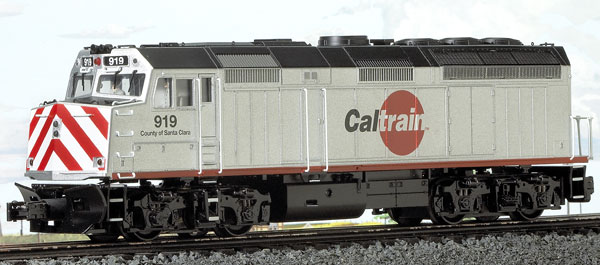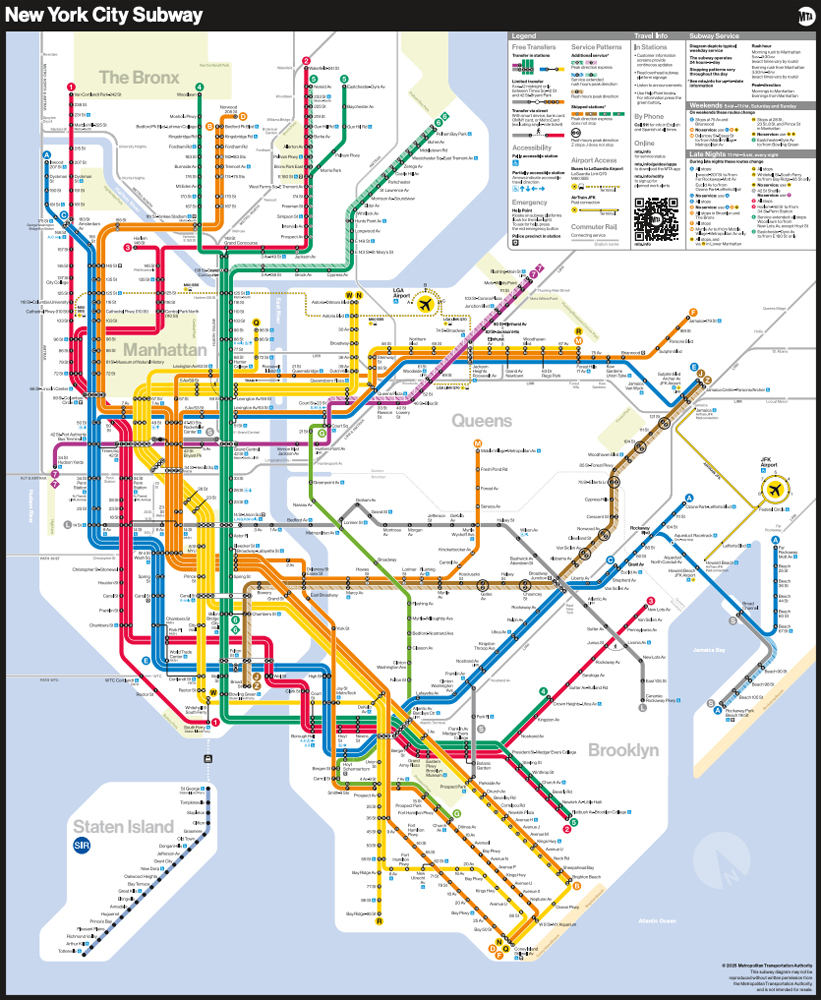When the SDP40F proved to be a failure, the F40 filled the gap and then some. Over its lifespan, the F40 was modified in horsepower, fuel capacity, head-end power rating, and even length.
More than 450 of the cowl-style locomotives were built. Although today Amtrak has replaced its F40s, many soldier on in tourist, dinner train, and commuter service.We originally reviewed the K-Line F40 back in the September 2001 issue. While that locomotive contained Lionel TrainMaster Command Control and RailSounds, it didn’t have speed control.
The model
In general, the design of the F40 looks more like a shoebox that someone tripped over more than it does a passenger locomotive. The EMD designers of the day obviously equated a streamlined cowl with passenger trains, but didn’t think the smooth bulldog face of 1950s-era railroading worked in modern times.
Although the prototype F40 is hardly a sleek or elegant design, K-Line’s product developers made the most of what they could influence.The square, Bizarro face (Superman comic fans will know what that means) is dressed up to the max. The nose features a white LED headlight as well as two bright yellow running lights. You’ll find grab irons on the front and top of the nose (near the sand hatches) and along both sides of the snout. These match up with steps cast into the pilot.
The two windshields each have two wiper arms, and grab irons are visible above the window and just below the number boards. Additionally, there are marker lights on the outside of the number boards and flashing strobes on the top edge of the cab, just behind the five-chime horn.
The cab has two crew figures, illumination, and two opening doors. The cab light is below foot level, between the crewmen. The steps to the cab have cast-in kickplates and align with steps affixed to the lead truck.
Behind the crewmen is a gray shield that hides the can-style motor from view. K-Line added texture to the wall, so the shield appears to be something more than a blank piece of plastic.
Like the crewmen in the MTH F59, the figures in the F40 cab don’t seem to be dressed appropriately, either. Both wear tight button-front jackets that reminded me of World War II soldiers.
The sides of the F40 mirror the prototype. There is very little texture, but there are well-executed hinges, latches, rivets, and seams. Just one of the three sets of filters on the sides and lower portion of the roof are see-through; the rest are cast-in.
Along the roof you’ll find rivet and seam detail, as well as the near-obligatory lift rings. The radiator fans are see-through, and the blades are white plastic for better visibility. Blow on them and the fans will spin. There is a rooftop exhaust for the operating smoke unit.
The painting and decoration for the low-key Caltrain paint scheme are excellent. The lettering is clear and crisp, right down to the trademark icon that’s part of the Caltrain logo. I believe this is the first time I’ve ever noted that on a model. The white paint used for the steps, grab irons, and handrails is a great accent. The effect was much better than the bare metal used on the F40 Amtrak version we reviewed in 2001.
On the test track
The addition of speed control significantly reduced the locomotive’s low-end speed average when compared to our 2001 tests. At that time, the lowest speed that we clocked was 12.3 scale mph, while the low speed for the new Caltrain version was 3.6 scale mph. In 2001 our high-speed test average was 130.5, while this time it was a bit more conservative at 105.5 scale mph. Drawbar pull registered 1 pound 9 ounces, slightly less than the 2001 measurement.
Our sample locomotive has the contraband K-Line speed-control equipment inside. Per the final resolution of the Lionel-K-Line technology lawsuit (CTT, November and December 2005), this disputed technology must be removed from new K-Line locomotives. Still, you may be able to score an F40 on the shelves of your local retailer that was shipped prior to the legal brouhaha. Late last year K-Line announced the development of its own command-control system that contains speed control. K-Line reported that its system will debut in summer 2006.
When operating our sample F40 in command-control mode with speed control turned on, I thought the movement was a little rough and noticed jerking at the lowest speeds. Running the F40 in conventional-control mode with the speed control on was far smoother. Our timed low speed was slightly better in conventional-control mode with speed control on than it was in command-control mode with speed control on.
Although the RailSounds audio system uses Lionel’s generic EMD diesel sound, it is still a pretty good package. The K-Line speaker (housed in the die-cast metal) gives it some extra “oomph.”
In the department of handy things, I liked the way that K-Line used quick-release connectors to mate the functional elements (antenna, lights) that are attached to the shell with the rest of the locomotive’s electronics on the frame. This makes maintenance much easier since you won’t be worried about breaking hard-wired connections.
The K-Line O gauge F40 is a nice model of a locomotive that has left a footprint on modern American passenger train operation. The speed control feature gives this model an edge over K-Line’s earlier editions, and overall performance was excellent.













